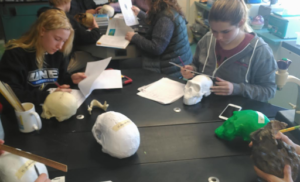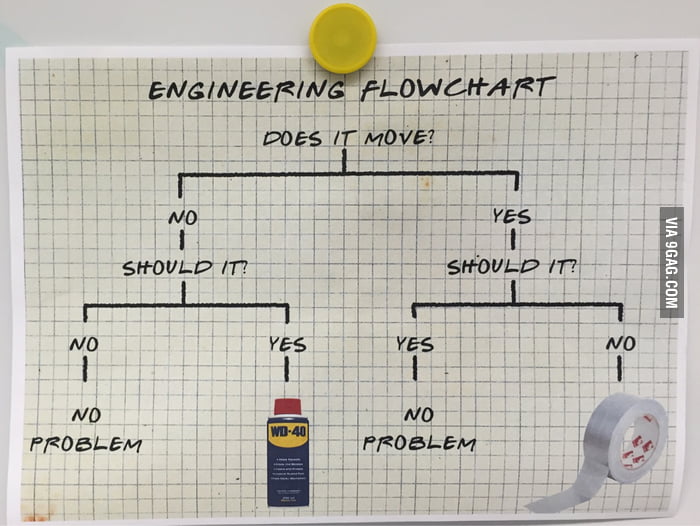By Dan Williams
Many of us are familiar with the famous quote from Theodosius Dobzhansky, that “nothing in Biology makes sense except in the light of evolution.” I am not alone when I state that evolution is one of my favorite topics within Biology. Whether its examining derived traits within butterflies, predator prey relationships, or how a complex molecule like the ATP synthase evolved, the topics in evolution are varied, complex, and fascinating.
Evolution however, is often the most misunderstood topic in Biology and despite our best intentions, we perpetuate the misconceptions with our classroom examples, exercises, and labs. Please do not misunderstand me, I am not suggesting at all that I am any different –regardless of my best efforts, I too, unknowingly, have passed on misconceptions about evolution to my students. Luckily, there are new tools to teach evolution which will inspire students with wonder, have them question phenomena, and help uncover and address the misconceptions we have built into our teaching of evolution.
One such tool is the three dimensional printing of fossil scans. It is easy to use, inexpensive, powerful and works well within a New York State Science Learning Standards (NYSSLS) environment. Fossil scans are accurate 3D renderings made by paleontologists of real fossils within the field which can be freely downloaded from public databases for printing on common 3D printers. At the conclusion of this article I have provided links to resources that can be used to download and 3D print fossils for your classroom.

3D Printed Fossil Crania (L-R H. Heidelbergensis, H. naledi, H. Neanderthalensis, H. Sapiens)
A few months back, I was beyond excited when I cleaned off my new fossil crania scan from the 3D printer. It was of a new hominid that was in the news called Homo naledi. My students were also excited, they asked lots of questions about naledi, its discovery and human evolution in general. I decided to perform an impromptu experiment with my new fossil crania and some other 3D prints I had laying around. I placed before my students the unidentified crania of Homo sapiens, Homo neanderthalensis, Homo heidelbergensis, Homo erectus and the new naledi print. I asked my students to place them in “evolutionary age order” –in other words, from the more primitive to the most advanced species.
Not surprisingly, my students placed the crania in order: small too large. Intuitively, this made sense to them, however it was completely wrong. Homonaledi, the smallest crania, actually only dates to around 300,000 years ago –concurrent with Neanderthals and late Heidelbergensis –hardly the most ancient. Evolution, we know is change, not progressive change, just change. My students “knew this.” We always talked about how extinction is evolution (bad change for the extinct), I even had slides showing that Neanderthal brains were larger than ours (implying they might have been more intelligent than us) but they died out and here we are. I emphasize lots of examples of non-progressive change in my lessons. None of this mattered when my students were faced with objects they could touch, look at and observe. Obviously my “talking about evolution,” and “showing examples of evolution” was not enough to dispel the myth that evolution is progress.
Through self-reflection I realized that I had reinforced this misconception. Whether it’s peppered moths in industrial England, the fastest cheetah catching the slowest gazelle, Hardy Weinberg with M&M’s or the beaks of finches, all of my hands on activities double down on the idea that evolution is progressive change.
Here on the desk in front of me, however, was a phenomenon; hominid crania did not progressively get larger –what on earth was going on?
If student interest and excitement on a topic is measured in the quantity, quality, and decibel level of questions, this phenomenon was a home run! I had to settle my students down, restore order, and respond to each question they had with questions of my own –they claimed their brains hurt after only a few enjoyable minutes.
This would be a great story if it ended there, but the 3D fossil scans provided so much more than a quick phenomenon to start teaching a unit. We examined the fossils scans, visually observing the presence or absence of features and measuring differences between the crania with calipers. Claims were made based on the observations, data charts, and graphs were created to examine the evidence of the crania. The reasoning of the students’ hypotheses were hotly contended between groups.


Students measuring 3D printed crania
I have now 3D printed fossil scans of mandibles, as well from all of the aforementioned species, plus Australopithecus afarensis and Australopithecus boisei. These provide additional data to examine so that my students can make claims about diet and the processing of food. In some ways, the mandibles are easier than crania, as tooth diameter (buccolingual width) is a more consistent measurement for students to obtain and compare.
Students made distant matrices of their data from the crania and the mandibles (separately). They then sketched cladograms based on their claims of ancestral and derived traits. They have used an erectus 3D print to determine ancestral traits in crania and the boisei 3D print for ancestral traits in mandibles.
 While the discussions were valuable, the students found the cladograms difficult to generate by hand. Most cladogram builders available today are for DNA comparisons, however I found an easy to use app developed David Dobson of Guilford College called “Simple Clade.” It was invaluable in creating cladograms, manipulating for maximum parsimony for unbiased data analysis of the student claims. The cladograms however, did not stop the arguments that had now generated among the students. The 3D prints provided phenomena that was not easy to explain, and fostered many claims on evolution that students actually wanted to explore. Best of all, none of the claims were based on evolution as progress.
While the discussions were valuable, the students found the cladograms difficult to generate by hand. Most cladogram builders available today are for DNA comparisons, however I found an easy to use app developed David Dobson of Guilford College called “Simple Clade.” It was invaluable in creating cladograms, manipulating for maximum parsimony for unbiased data analysis of the student claims. The cladograms however, did not stop the arguments that had now generated among the students. The 3D prints provided phenomena that was not easy to explain, and fostered many claims on evolution that students actually wanted to explore. Best of all, none of the claims were based on evolution as progress.

Like most biology teachers, evolution is a major passion of mine, hominid evolution specifically. I also find that hominids interest students as much (or almost as much) as dinosaurs. Using hominids as examples captivates students and provides ample phenomena to study. I have read about human evolution for years, watched videos about it, examined anatomical diagrams, but until I held 3D prints of hominid skulls in my hands, I can honestly say I did not fully understand human evolution.
The same can be said for my students, as well. We discussed evolution, and I gave traditional examples of evolution, but until they held the 3D scans of fossils in their hands, they had misconceptions. I never knew my traditional methods of teaching evolution led to misconceptions, working with 3D printed fossil scans not only helped uncover the students misconceptions, but also helped clear them up.
If you have any questions or are looking for the specific methods of how to download and 3D print your own fossil collection, please e-mail me at dan.williams@shelterisland.k12.ny.us
Useful Links
Fossil Databases:
African Fossils https://africanfossils.org/search
Morphosource https://www.morphosource.org/
Educational Links
iDigfossils http://www.idigfossils.org/
Human Evolution Teaching Materials Project https://www.hetmp.com/
Paleoanthropology
John Hawks YouTube Channel https://www.youtube.com/channel/UCVfaXPlLTPTjbU-ed9VMBfg
Programs Used
SimpleClade http://guilfordgeo.com/simpleclade/index.html
MeshLab http://www.meshlab.net/
MeshMixer http://www.meshmixer.com/
MakerBot https://www.makerbot.com/








